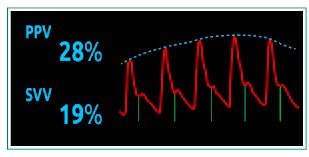The Pv-aCO2 gap is an easily obtained measure that serves as a marker of impaired cardiac output/tissue perfusion, yet seemingly few of us use it in practice
A short 🧵 on ΔCO2, its potential benefits & some pitfalls
#Hameodynamics #FOAM
A short 🧵 on ΔCO2, its potential benefits & some pitfalls
#Hameodynamics #FOAM
https://twitter.com/norfolk_tim/status/1482769404102381568
The Pv-aCO2 gradient (ΔCO2) is simply the partial pressure of CO2 in venous blood (mixed or central venous) - the partial pressure of CO2 in arterial blood.
Normal values are ≤ 6mmHg (0.8kPa)
Values > 6mmHg suggest a low CO or impaired microvascular tissue perfusion
Normal values are ≤ 6mmHg (0.8kPa)
Values > 6mmHg suggest a low CO or impaired microvascular tissue perfusion

ΔCO2 is primarily determined by total CO2 production (VCO2), cardiac output (CO) and the complex relationship between pCO2 and total blood CO2 content (CCO2).
It can be conceptualised mathematically using the Fick equation
It can be conceptualised mathematically using the Fick equation

PCO2 is related to CCO2 by the CO2 dissociation curve, a curvilinear relationship that can be described by:
PCO2 = k x CCO2 (where k is the dissociation coefficient)
Over physiological ranges they maintain a relatively linear relationship, as shown below:
PCO2 = k x CCO2 (where k is the dissociation coefficient)
Over physiological ranges they maintain a relatively linear relationship, as shown below:

We can modify the Fick equation, swapping CCO2 for pCO2, to show how ΔCO2 is inversely related to CO & why it’s a good surrogate of CO.
This has been demonstrated in multiple trials especially during hypovolaemic, cardiogenic & obstructive shock.
[PMID: 15803301, 9635647]

This has been demonstrated in multiple trials especially during hypovolaemic, cardiogenic & obstructive shock.
[PMID: 15803301, 9635647]


In sepsis the relationship becomes less clear, as microcirculatory dysfunction can lead to tissue CO2 accumulation & an elevated ΔCO2 gap despite a high CO.
Here ⬆️ ΔCO2 can be a helpful sign of poor tissue perfusion despite reassuringly high CO/ScvO2
doi.org/10.1007/978-3-…


Here ⬆️ ΔCO2 can be a helpful sign of poor tissue perfusion despite reassuringly high CO/ScvO2
doi.org/10.1007/978-3-…



🚩A few pitfalls to be wary of 🚩
- ⬆️ ΔCO2 only reflects tissue dysoxia if caused by a ‘stagnant’ mechanism, and can be normal in anaemic/hypoxic/cytopathic dysoxia
- Extremes of pH/Temp/pO2 will shift the CO2 dissociation curve altering the pCO2/CCO2 relationship
- ⬆️ ΔCO2 only reflects tissue dysoxia if caused by a ‘stagnant’ mechanism, and can be normal in anaemic/hypoxic/cytopathic dysoxia
- Extremes of pH/Temp/pO2 will shift the CO2 dissociation curve altering the pCO2/CCO2 relationship
Take-away message:
🔸 ΔCO2 is an easily obtained, reliable indicator of tissue perfusion & can be a useful data point in the evaluation/management of patients with shock
*proposed diagnostic algorithm by Ltaief et al. PMID: 34461974
🔸 ΔCO2 is an easily obtained, reliable indicator of tissue perfusion & can be a useful data point in the evaluation/management of patients with shock
*proposed diagnostic algorithm by Ltaief et al. PMID: 34461974

Hope the 🧵 may’ve been of interest & if you’ve any thoughts, corrections or questions please comment. I’d love to hear how/if you incorporate it into clinical practice & if you find it beneficial!
End/
End/
• • •
Missing some Tweet in this thread? You can try to
force a refresh









